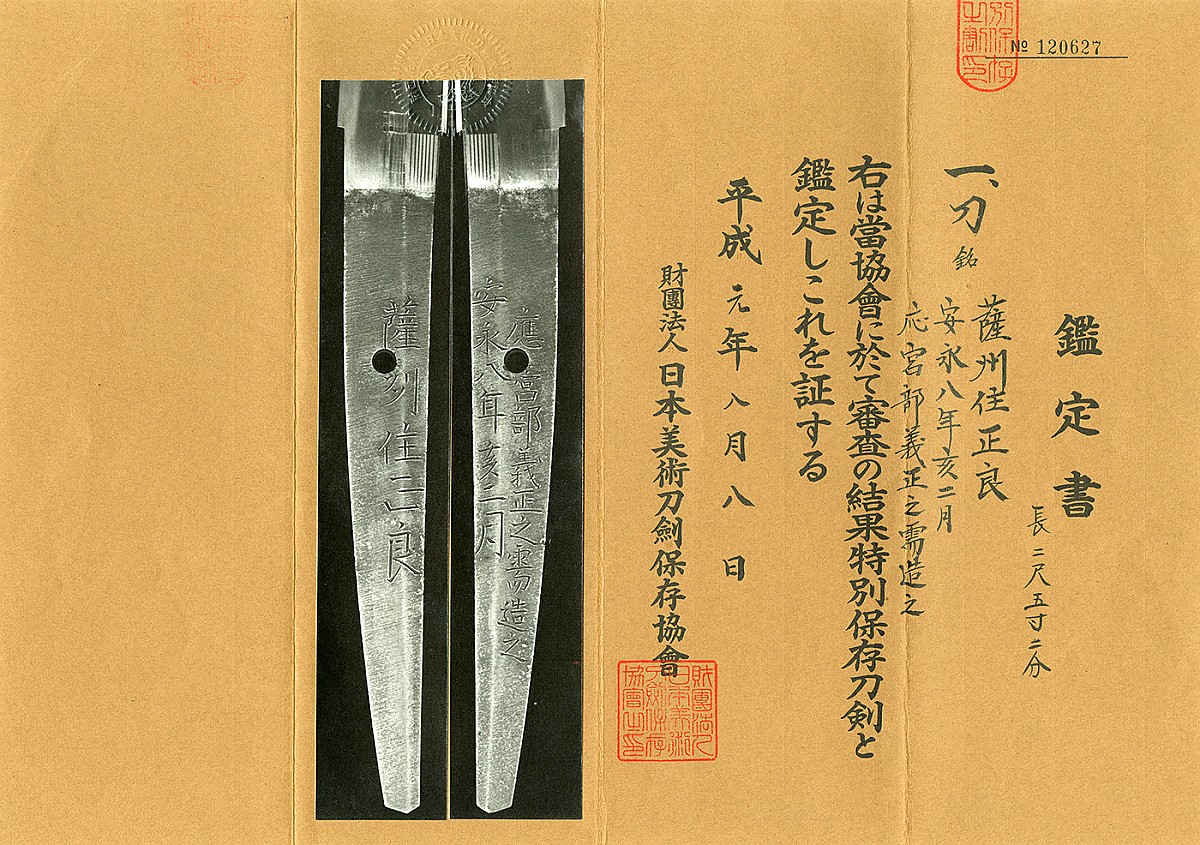In the late Edo period, two swordsmiths Motohira and Masayoshi were very famous. Both were originally from Satsuma and it was in that province that they forged their works was famous all around Japan. Their reputation as masters of an exceptional level was so widely-known that many samurai and many famous personalities of that time sought to order forging of swords just from these masters.
Satsuma Masayoshi (薩摩正幸) was born in the 18th year of the Kyōhō era (享保, 1733) as the son of the second generation of Masayoshi (正良) and his family name was Ijichi (伊地知). Masayoshi at birth was given the name Ji ́emon (次右衛門) but one can find another variants of his fist name: Heikaku (平覚) and Chūzō (仲蔵). Masayoshi succeed as third generation of Masayoshi after the first year of An ́ei era (安永, 1772) as the year of death of his father is unknown but it is said that he was still alive in the 1772.
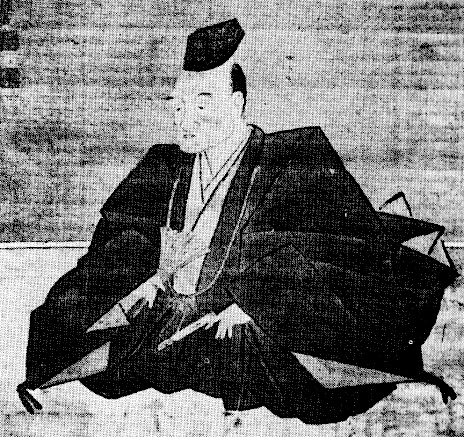
Figure 1. Hōki no Kami Masayoshi's portrait.
A very interesting feature of indicating dates in some of Masayoshi's works is striking. He very often, along with the date of manufacture of the sword, indicated his age. Moreover, the master indicated his age in dating both at an early stage of his work, and in a later period. As examples, there are well-known works dated as follows:
- made in the 8th month of the 6th year, the year of the Hare, of the Meiwa era (明和, 1769) at the age of 38 (in the 38th year of his life).
- made in the 11th of November in the 3rd year, the year of Monkey, of the An ́ei era (安永, 1774) at the age of 43 (in the 43rd year of his life).
It is necessary to indicate that both blades mentioned above was signed as: Sasshū-jū Masayoshi (薩州住正良).
Masayoshi’s works are extant from around Hōreki era (宝暦, 1751-1764) and he was signing its as 正良 during the early period of his artistic activity. According to some sources, he signed also in early years of his activity as Masahira (正平) and Suetsura (季陣). Masayoshi was awarded the honorary title of Satsuma-kankō (薩摩官工, official smith of the Satsuma fief) from the 8th Shimazu Lord, Shimazu Shigehide in the 5th year of the Tenmei era (天明, 1785). Since he received this title he began to use this new prefix in his signature. Masayoshi received this title at the same time when Motohira received his title Sappan-shi (薩藩臣, retainer of the Satsuma fief), both titles were personally conferred by the Lord in recognition of their ability in swordsmithing art.
Masayoshi was awarded the honorary title of Hōki no Kami (伯耆守) on the 1st of December in the 1st year of the Kansei era (寛政, 1789) and after that he changed kanji 良 to 幸 in his signature. Simultaneously, he rescinded previous title Satsuma-kankō, received in 1785.
Masayoshi continued to work alongside his very death on the 22nd of April in the 1st year of the Bunsei era (文政, 1818). It is believed that the last of his works is dated on the 15th year of the Bunka era (文化, 1804-1818). There is an assumption that some of the swords that Masayoshi did not have time to finish before his death were completed by his disciples. In particular, a detailed analysis of one of these examples can be found in an article by Markus Sesko: Hōki no Kami Masayoshi’s (probably) last blade (https://markussesko.com/2017/06/21/hoki-no-kami-masayoshis-probably-last-blade/). The fact that Mаsayoshi was one of the most famous teachers for an era of swordsmiths in Japan at that time was undeniable. According to old documents, he trained more then forty disciples in the smithing art. Masayoshi is the author of the Tōken Tanren (刀剣鍛錬), a book devoted to swordsmithig art.
The Fujishiro rating of Masayoshi’s works is jōjō-saku (上々作—a very high level of skill). This is a very high rating for swordsmiths of the Shishintō period and this is a confirmation of the high quality of the work of this master. As another confirmation, we can consider a fairly large number of extant works, which are assigned the category of Jūyō Tōken. As of today, 11 Jūyō Tōken swords are known to be third generation Masayoshi’s works. All of these Jūyō swords borne the signature Sasshū-jū Masayoshi (薩州住正良) or Sasshū-jū Taira Masayoshi (薩州住正平良). The latest work (Jūyō #23) is dated: on the 2nd month of the 1st year of the Kansei era (寛政, 1789), year of the Rooster. The existence of this signature confirms the information that, until the end of 1789, Masayoshi used kanji 良 in his signature.
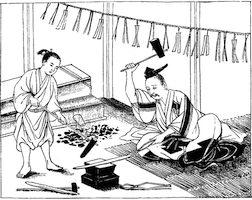
Masayoshi’s works have the following distinguishing features:
Sugata: magnificent and powerful sugata with a broad mihaba, dense kasane, plentiful of hira-niku, shallow sori, and ō-kissaki.
Kitae: in his early activity period he forged a pure itame mixed with masame and in later an itame mixed with ō-hada, wich characterised by plentiful of ji-nie.
Hamon: notare-midare and gunome-midare with broad yakihaba, in his early years he also applied a suguha-hotsure, the yakigashira show nie which make them look pointed, there are plentiful of hataraki found like sunagashi, nijūba or imozuru, flamboyant and magnificent Satsuma-typical gonome-togari with ara-nie fukai.
Bōshi: roundish and shows hakikake or nie-kuzure.
Horimono: different types of hi are most common, bō-hi with kaki-nagashi, large size engravings of ryū, etc.
Nakago: tang has a bulbous cutting-edge side which tends to funagata, nakago tip is kengyō-jiri, the yasurime are kiri. According to Fujishiro san, there are examples of very thin nakago that was supposedly done to avoid of removal signature and applying gimei of old Sōshū-Den masters.
Tokubetsu Hozon Masayoshi katana

Designated as Tokubetsu Hozon Tōken on August 8, 1989.
Signature: Sasshū-jū Masayoshi (薩州住正良).
Date of production: on the 2nd month of the 8th year of the An ́ei era (安永, 1779), the year of the Pig. (安永八年亥二月).
Addendum: this sword was created in response to the request of Miyabe Yoshimasa (應宮部義正之需造之).
Thus, Tokubetsu Hozon Masayoshi katana is so-called chūmon-uchi (注文打ち) sword. This term can be literary translated as “sword made on the special order” (and not produced ahead for stocks).In contrast to this, mostly kazuuchi-mono (数打ち物, i.e. produced in large quantities) were only briefly signed or not signed at all, whereas chūmon-uchi sword borne on the nakago: the name of the swordsmith, his official title and place of residence, and the production date, etc.
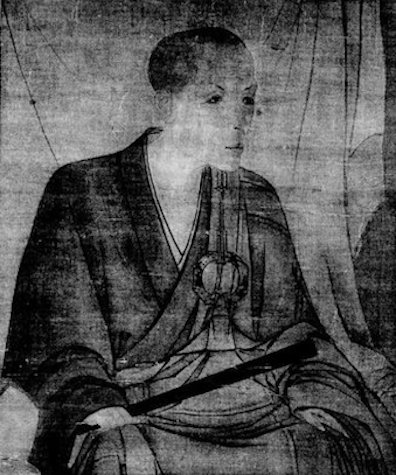
Figure 2. Miyabe Yoshimasa's portrait.
Miyabe Yoshimasa (宮部義正, 1729-1792), also known variously as Chūhachirō and Genpachi, was a samurai who served as retainer in the Takasaki Han (高崎藩) of Kōzuke Province (上野) which in his time was governed by a branch of the Ōkōchi-Matsudaira (大河内松平) clan. He was from an early period of his life, a pupil of poetry of the famous Kyōto Reizei family representative: Reizei Tamemura (冷泉為村, 1712-1774). The Reizei family descended from Fujiwara no Michinaga (藤原道長, 966–1028), is a branch with a long poetic tradition. Tamemura is said to have had around 3,000 disciples and his activity was not only to produce poetry but explicitly to train disciples in poetic composition, correcting their work.
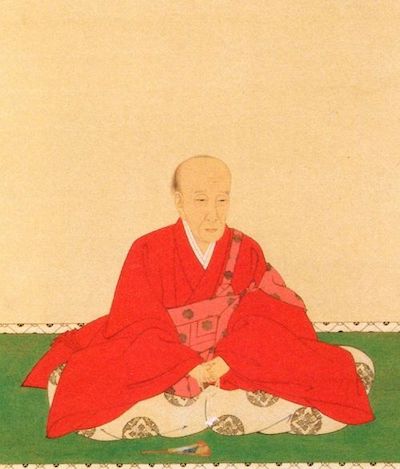
Figure 3. Reizei Tamemura's portrait.
Yoshimasa because of his fame as a poet, was appointed personal poet instructor to the shōgun Tokugawa Ieharu (徳川家治, 1737–1786) for constructing his own collections of tanka poetry (短歌). If Yoshimasa is remembered at all now, it is for his kikigaki he wrote in the late 1770s, titled the Yoshimasa kikigaki (義正聞書).
Miyabe Yoshimasa was chief castle karō of the Ōkōchi-Matsudaira family. Karōn (家老, house elder) were top-ranking samurai officials and advisors in service to the daimyō of feudal Japan or Chief Retainer who headed the fief and castle while the Lord was away.
For more information, please visit: https://kb.osu.edu/bitstream/handle/1811/675/v9n2Carter.pdf;jsessionid=4BDD2A1C883B2FD661290EE86AF45742?sequence=1
One can find another one example of the sword connected to Miyabe family. On the www.iidakoendo.com website there is a wakizashi signed Nagasone Okisato Nyūdō Kotetsu (長曽袮興里入道乕徹) for sell. There is kinzogan (金象嵌) inscription on the sashi-ura side of the nakago: 宮部孫八藤原義乕帯 which could be literary translated as «owned by Miyabe Magohachi Yoshitora». Followed the explanation by Iida san made for this wakizashi, this name may be one of the Miyabe Yoshimasa’s pseudonym together with Chūhachirō and Genpachi. It shows that this Miyabe knew the true quality and had a very good taste.

Figure 3. Source: https://iidakoendo.com/7471/
Previous owner: Kimotsuki Kaneyoshi (肝付兼吉).
The Kimotsuki family of Ōsumi (大隅) Province were an ancient family which claimed decent from the Emperor Tenji (天智天皇, 627-671) and are descended from Tomo Kaneyuki who came of from Shimazu-shi. According to information from chronics about in the year 970, Kaneyuki’s family was descent from Dazaifu officials and became a prominent ruling family in Ōsumi Province. They are first mentioned in the chronicles of early Heian period that the first head, Kanetoshi, was granted lands in Ōsumi Province and took the county name of Kimotsuki as the family name.
In 1561, the Kimotsuki clan was at the peak of its influence and power and was very close to unifying the entire Ōsumi Province under its authority. However, this growing power was frightened the Shimazu clan, which has long had a very close family relationship with Kimotsuki family (their heads were intermarried with their neighbours the Shimazu for several hundreds years). As a result of the conflict, which lasted about 20 years and in which not the least role was played by women from the Shimazu clan, who were the wives and mothers of the leaders of the Kimotsuki clan, Ōsumi Province was annexed by Shimazu, and the Kimotsuki clan lost its independence. The annual income of Kimotsuki fief at the time of joining was valued in 120,000 koku, i.e. the Shimazu won a very rich prize.
The Kimotsuki clan became direct vassals of Shimazu. Kimotsuki Kanemori was killed at the Battle of Sekigahara in 1600, fighting under the banners of the Shimazu clan. His son, Kimotsuki Kaneyuki the 20th clan Head, was granted 100 koku and lived in greatly reduced circumstances. Kaneyuki died in his 20th year without an heir and was succeeded by a son of Niiro Tadahide who became Kimotsuki Kaneyasu. Thus for the first time in over 600 years the direct line of the Kimotsuki clan was interrupted.
At about the same time with these sad events in 1611, the Kimotsuki mainline branch of the youngest son was granted Kiire (喜入) fief, located on the south near Kagoshima, and which was estimated with an annual income of 5,500 koku. The 1st Kiire lord was Kaneatsu, the son of Kanemori, Lord of Kajiki Castle who was karō of Shimazu Yoshihisa.
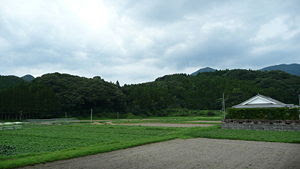
Figure 4. Grounds of Koyama Kimotsuki Castle.
Heads of the Kimotsuki clan
1.Kaneatsu 1562-1609 (the second son of Kimotsuki Kanemori)
2.Kanetake 1601-1635
3.Kaneie 1619-1675
4.Hisakane 1641-1709 ( karō of Shimazu Mitsuhisa, c.1670)
5.Kaneda 1665-1718
6.Kanemitsu 1686-1739
7.Kanetaka 1726-1761
8.Kanemitsu 1755-1804
9.Kanetsura 1777-1820
10.Kaneyoshi 1802-1876
11.Kanetane 1826-1884
Kimotsuki Kaneyoshi san is one of the descendant of the Kimotsuki clan mainline and now a member of the Kagoshima NBTHK branch.
For more information about Kimotsuki clan, please visit: http://naminohira.blogspot.com/2010/12/yukiyasu-and-kimotsuki-kanetake.html
This sword is currently in the collection of an American collectors, who kindly presented it to our Satsuma Province Swordsmiths Exhibition.

